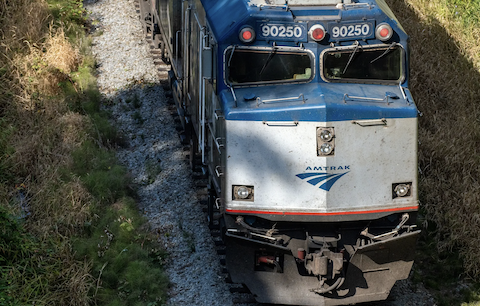In late October, President Biden visited Baltimore to announce that the Maryland Port Administration will receive $147 million in federal funds for infrastructure improvements.
During his visit, Biden did not acknowledge or address serious issues with another much larger federally funded infrastructure project in Baltimore.
That project is the construction of a new $6 billion Frederick Douglass Tunnel in Baltimore for Amtrak, America’s quasi-public rail passenger company.
The current tunnel is over one hundred and fifty years old and is a major bottleneck on Amtrak’s high speed northeast corridor passenger rail service between Boston and Washington DC.
As a long-time staunch supporter of Amtrak, I understand the need for this long overdue tunnel replacement project.
That said, I am stunned and disheartened by how much this project has been mismanaged.
In early October, Amtrak’s Office of Inspector General (OIG) released a scathing report on this project.
The mission of Amtrak’s OIG is simple and straightforward.
Conduct and supervise independent and objective audits, inspections, evaluations, and investigations relating to agency programs and operations; promote economy, effectiveness, and efficiency within the agency; prevent and detect fraud, waste, and abuse in agency programs and operations.
Consistent with their mission, in OIG’s report on the Baltimore tunnel project, they noted that Amtrak did not establish a program management structure early enough. As a result, they struggled to complete the necessary planning in scheduling, communications, document management, and risk management for this project on a timely basis.
The OIG criticized Amtrak’s initial assignment for project management responsibility of a $6 billion dollar project to a single individual.
Eventually, the program team was expanded to seven members, but five told OIG auditors that they were still overwhelmed by their workload.
Amtrak officials have since acknowledged staffing was insufficient and said the Capital Delivery team should have been staffed before it received responsibility for the program.
Amtrak later decided to hire a “delivery partner” to provide management and oversight, but that contractor wasn’t engaged until the spring of this year. Amtrak officials agreed that the decision “should have been made earlier” to “maximize the benefits the delivery partner was intended to provide.” As a result, the new contractor has to plan a management structure as it also prepares for construction.
The OIG report made three recommendations: complete program management planning for the tunnel project, establish processes to ensure the a project’s management structure is established early enough to produce strong oversight for the life of the project and establish processes to ensure program teams have sufficient staff before projects are assigned to the Capital Delivery department. Amtrak management, in their response to the report, agreed with the recommendations and outlined how it is acting to meet those goals.
The OIG report concludes the project now “faces a significantly increased risk of cost overruns and additional delays as it proceeds into major construction.” The OIG report does not include projections for future cost overruns and additional delays.
One thing is almost certain about a six-billion-dollar construction project. Cost overruns and completion delays will likely be substantial. As a result, funds needed for other Amtrak service improvements to increase ridership and reduce their government subsidies will not be available.
I am sure Amtrak’s colossal mismanagement of federal funding is not unique.
Unfortunately, conventional thinking is public infrastructure project completion delays and cost overruns are standard operating procedures. In other words, this is the way it has always been and the way it will always be.
That thinking needs to change especially when the federal budget deficit is at record levels, currently at 1.83 trillion dollars, and growing.
Former U.S. Senator Everett Dirksen once observed, “A billion dollars here and a billion dollars there and pretty soon you are talking real money.”
Many Americans are carefully monitoring their budgets and adjusting their spending habits on a regular, even daily basis in order to pay their bills for basic living expenses.
Going forward, we need and deserve elected and appointed officials at every level of government to take appropriate steps to ensure funding for all government-funded infrastructure improvement projects is spent efficiently and effectively.
They need to address the fact the current audit process is largely reactive, not proactive.
Concurrently, government project managers must be fully aware of and committed to best practice project management policies and procedures prior to and during large-scale and complex infrastructure improvement projects.
It is common sense to help ensure things go right in the first place as opposed to learning what went wrong after the fact.
David Reel is a public affairs and public relations consultant who lives in Easton.



Al DiCenso says
No surprise; Amtrak is mis-managed from top to bottom. There are no executives at the top with any railroad operating experience whatever. This includes, with one possible exception, the Board of Directors as well. The entire operation is a management disaster, and will continue to be a bloated, money-sucking bureaucracy until the entire management structure is replaced by an experienced group of railroad operating executives.